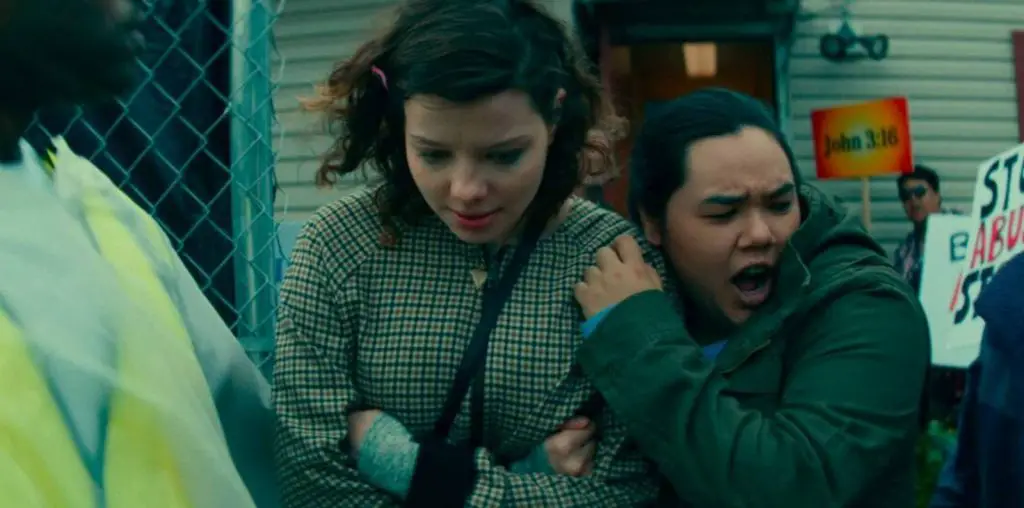
As proud as parents can be when their children succeed and display other signs of having been raised, nurtured, and taught well, parents can also be filled with anxiety and conflict when making life-altering decisions without input from the children. Regardless of whether or not the parent is legally empowered to make those decisions, there are circumstances (commonly involving physical injury) where the child literally cannot protest. Moreover, when a child is experiencing physical or mental anguish, having to weigh the right vs. the best course of action is preferable to the alternative of not having any options. These issues surface in Thomas Verrette’s brooding science-fiction film “I Am the Bluebird,” which premiered at the 2009 Atlanta Film Festival.
Unfolding through flashbacks, flash-forwards, and reverie-like sequences, “I Am the Bluebird” centers on the relationship between Dr. Charles Galloway (Robert Pralgo) and his son Ethan (Justice Leak) and how it becomes strained when the actions of the father irrevocably affect the well-being of the son. Basically, Ethan has lost his memory, his dad had a hand in it, and few very people wish to clarify his lingering confusion. The only lead he has is a photograph of him and a girl walking on a beach. As demonstrated in the film, it takes a lot more than sighs of exasperation from friends and family to slow the bluebird down.
Camille (Elizabeth Keener) is the girl in the picture that Ethan’s best friend Luke (Brian James Irvine) gives to him. Who is Camille, though? What does she know about Ethan’s past that she won’t say, and the viewer won’t learn until Ethan does? Just when the film suggests the awful truth is that Ethan saw his brother (Steven Ellison) commit suicide, suffered an aneurysm, and subsequently blocked out having witnessed that tragedy, “I Am the Bluebird” yanks the viewer down another corridor — to another explanation of “what really happened.”
Verrette’s film has a strong first half. The scenes between Ethan and his father are compelling and explore the dilemma that Dr. Galloway faces. As a parent, what choice did he have? He had the means to spare his son further discomfort; he would do whatever was within his authority to do. He may or may not have been aware of the risks involved — that Ethan would become an amnesiac and be forced to grow into a new life, a new identity.
The link between memory and self-agency is, in and of itself, a fascinating subject, but Verrette’s treatment of it makes the film frustrating to watch. Not only does the viewer have to sort through plot twists and figure out how to differentiate between the past and the present (there are too few visual indicators), the film also challenges the viewer to master the narrative and structural ambiguities that could have been bolstered by more consistent light and color schemes. Oscillate between hues and levels of brightness/contrast with a sense of purpose, not arbitrariness!
“I Am the Bluebird” is certainly “pretty” and “cool” in the aesthetic department. And yet, no matter how exquisitely and adeptly the film depicts Atlanta’s skyline and incorporates various MARTA subway stations and views of retail extravaganza Atlantic Station, I ought to be taken in by much more than how it showcases recognizable places in my city. Right?

